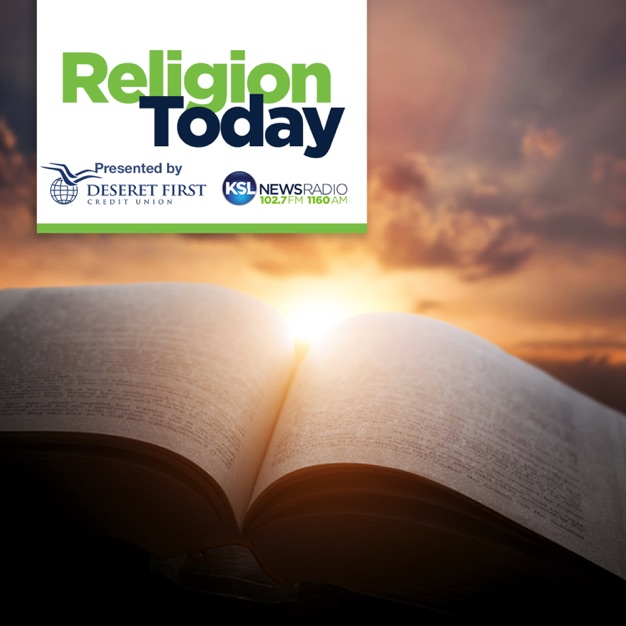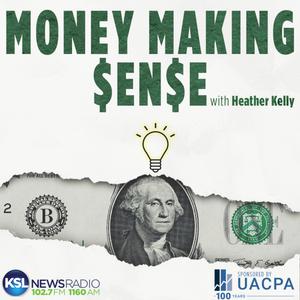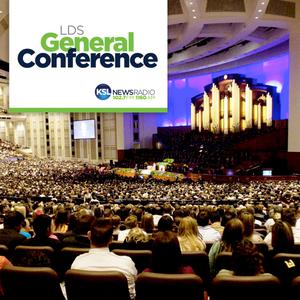
Religion Today
Issues of faith and spirituality that matter to LDS, Mormons, The Church of Jesus Christ of Latter-Day Saints
- 21 minutes 30 secondsHow Joseph Smith Translated the Book of Mormon
In this episode of Religion Today, host Martin Tanner describes from the original, primary sources, how Joseph Smith likely translated the Book of Mormon. Oliver Cowdery, Martin Harris, David Whitmer and others speculated that Joseph Smith saw words or letters in his seer stone or in the Nephite Interpreters. This cannot be true, because Joseph Smith made revisions to the completed manuscript, which he would never have done if the words were God's alone. Joseph Smith told Joseph Knight that he "could see anything" in the Nephite Interpreters. This implies Joseph Smith could literally see the events in the Book of Mormon text, along with emotions, untranslated words, clothing, animals, buildings, way of life, and other details of Nephite life in the Nephite Interpreters.
25 January 2025, 11:36 pm - 21 minutes 30 secondsStudies Show Religious People are Happier and Healthier
In this episode of Religion Today, host Martin Tanner describes the groundbreaking psychological research of Columbia Professor Allen Bergin, which has been replicated, and shows religious people are happier and healthier than the general population. Specifically, religiously active people have lower rates of depression, anxiety, suicide, substance abuse, Obsessive-compulsive disorder, Bipolar disorder, PTSD, and eating disorders, than the general population. And, religious people with these problems are more likely to improve.
19 January 2025, 12:36 am - 21 minutes 30 secondsScience Demonstrates the Existence of God
As recently as 20 or 30 years ago, most leading scientists believed science demonstrated God does not exist. But in the last twenty years, leading scientists have come to believe life and the Universe itself cannot be explained, without an intelligent designer, namely, God. In this episode of Religion Today, host Martin Tanner highlights many reasons leading scientists in many fields now say only an intelligent designer. or God, is the only explanation for the existence of life, and for way the Universe works.
11 January 2025, 10:16 pm - 21 minutes 30 secondsThe Tower of Babel Has Been Found
The Tower of Babel described in the Book of Genesis is not a myth. It did exist. It has been found. It was a ziggurat, or stepped pyramid, located about 56 miles south of present day Bagdad, Iraq. Its name was "Etemenanki" with means "Temple of the Foundation of Heaven and Earth." It was dedicated to the pagan god Marduk. It was built about the14th century BC. It was a 7-layered pyramid, meaning it had seven stories, or steps. The earliest pyramids were not smooth-sided like the Great Pyramid at Giza, Egypt. The descriptions, ancient and modern, of Etemenanki are so similar to the descriptions of the Tower of Babel in Genesis, there is no doubt they are one and the same.
4 January 2025, 12:43 am - 21 minutes 30 secondsDoes God Have a Sense of Humor?
In this Religion Today episode, host Martin Tanner shows from many passages in the Bible and Book of Mormon, that God has a sense of humor. Examples of exaggeration, hyperbole, sarcasm and humorous situations, in the Bible and Book of Mormon, are given by Martin in this rarely discussed topic.
28 December 2024, 2:17 am - 22 minutesThe Birth of Jesus from The New Testament
Host Martin Tanner shares the narrative of the birth of Jesus, in modern English, from the Good News Translation of the Bible, with explanations of seeming contradictions, such as: When Joseph found out Mary was expecting, why would he need to divorce her? They weren't married yet. Who were the Wise men? Why are they part of the Gospel story of Jesus's birth?
21 December 2024, 3:20 am - 21 minutes 30 secondsChristmas and The Need for a Savior
In this episode of Religion Today, host Martin Tanner looks at the Atonement, and answers questions, including: (1) Does every world have a savior, or is Jesus the Savior of all worlds? (2) What does and word Atonement mean? How or in what way or sense did Jesus take upon himself the sins of the world? (3) Does the Atonement cover more than sins, including losses, sicknesses, physical and mental defects, etc.? and, (4) How can a person know if the Atonement works for her or him?
14 December 2024, 4:45 am - 21 minutes 27 secondsAt Christmastime Read the Gospel of Mark
The Gospel of Mark can be read in about an hour and a half. The show's host, Martin Tanner, suggests that during the Christmas season everyone should read the Gospel of Mark. It is the earliest Gospel, and in effect, the Gospel of Peter, because John Mark, the author was writing Peter's description of what Jesus said and did. The Gospel of Mark is a marvelous testimony of Jesus as the Messiah promised by God, to save his chosen people. This is what people are celebrating at Christmastime.
7 December 2024, 3:23 am - 21 minutes 30 secondsEarly Christian Beliefs About Jesus
As a follow-up to last week's show, in which host Martin Tanner described his text debate with uninformed, evangelical, anti-Mormon critic Iain Sharp, Host, Martin Tanner suggests two books for listeners interested in more information comparing and contrasting Latter-day Saint Christian beliefs with those of Evangelical Christians: "Are Mormons Christians?" and "How Wide the Divide." BYU Professor Stephen Robinson authored both books.
Next, Martin gives a brief sketch of early Christian beliefs about Christmas, including, when Jesus was born, information about about Mary and Joseph, and, Jesus's vocation as a Tekton (craftsman). Martin discusses Jesus's earthly family, and then traces the belief in a Second Coming of Jesus to Acts 1:11 and 1 Thessalonians 4:16-17. The "Son of Man" described in Daniel chapter 7, was the annointed one, or Messiah, to early Christians. Jesus most used phrase to describe himself was "Son of Man," 30 times in Matthew, 14 times in Mark, 25 times in Luke, and 12 times in John.
30 November 2024, 11:43 pm - 21 minutes 30 secondsMy Texting Debate With an Evangelical Christian
In this episode of Religion Today, host Martin Tanner shares the highlights of his debate by text with self-contradictory, anti-Mormon critic, Iain Sharp from Scotland, on: (1) Sola Scriptura, which means only the 66 books in the Bible are scripture, (2) Trinitarian concept of God, which means that God, Jesus and the Holy Ghost are one undivided substance. Martin points out that neither Sola Scriptura nor the Trinitarian concept of God is found in the Bible, which means that Evangelicals who adhere to them, are self-contradictory. Martin also discusses the idea found in many places in the scriptures, including Hebrews 1:1-5, which say Jesus and God look almost exactly like each other.
23 November 2024, 9:35 pm - 21 minutes 30 secondsThe Little Known Details of the Restoration of the Melchizedek Priesthood
In this episode of Religion Today, host Martin Tanner describes the little known details of the restoration of the Melchizedek Priesthood, on Sunday, May 24, 1829, nine days after the restoration of the Aaronic Priesthood, on Friday, May 15, 1829. Peter, James and John appeared to Joseph Smith and Oliver Cowdery, at the crack of dawn, the day after they had been acquitted after a two day trial, of all charges, including "deception" which be the same as a "fraud" charge today. A mob, angry over the acquittal, waited for Joseph and Oliver to exit the courtroom at Colesville Tavern (a lodging place, post office and courthouse, not a liquor store or drinking establishment). Instead of exiting out the front door, Oliver and Joseph jumped out a rear window of the Coles Tavern, and walked all night on their 27 mile journey home through the wilderness. After traveling about 17 miles, Oliver, exhausted, was ready to give out. Just then, at early dawn, Peter, James and John appeared and conferred the Melchizedek Priesthood on Joseph and Oliver
17 November 2024, 6:50 am - More Episodes? Get the App
Your feedback is valuable to us. Should you encounter any bugs, glitches, lack of functionality or other problems, please email us on [email protected] or join Moon.FM Telegram Group where you can talk directly to the dev team who are happy to answer any queries.
 Let's Get Moving with Maria
Let's Get Moving with Maria
 Money Making Sense
Money Making Sense
 The Church of Jesus Christ of Latter-day Saints General Conference Podcast
The Church of Jesus Christ of Latter-day Saints General Conference Podcast
 KSL's Unrivaled
KSL's Unrivaled
 Inside Sources with Boyd Matheson
Inside Sources with Boyd Matheson